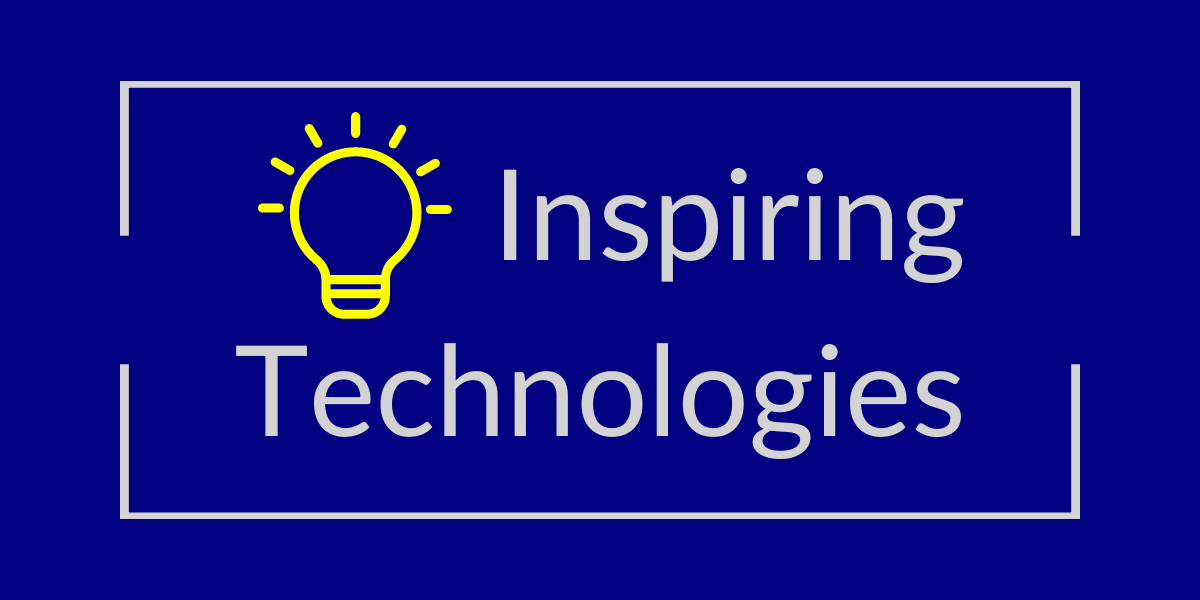
Exceeding Customer Expectations: How SMBs Benefit From Digital Transformation
Contents
In today’s dynamic business landscape, the key to success for small and medium-sized businesses (SMBs) is no longer solely based on delivering products and services. It’s about exceeding customer expectations, and the transformational journey that leads to this remarkable achievement. As technology advances, customers’ needs and demands evolve at an unprecedented pace. SMBs are finding themselves at the crossroads of adaptation or stagnation. It’s within the realm of digital transformation that they discover their path to not only meet but surpass customer expectations.
This journey builds upon our previous exploration in the article “Digital Transformation for Small Business: What You Need to Know,” where we introduced ‘enhancing customer experience’ as a vital benefit of digital transformation. In this article, we will delve deeper into how digital transformation empowers SMBs to elevate customer satisfaction, streamline operations, and secure their place in the fiercely competitive market. The promise of digital transformation is not just a vision; it’s a tangible reality that holds the potential to redefine how SMBs deliver value to their customers. Let’s uncover the strategies, tools, and stories that illuminate the path toward “Exceeding Customer Expectations.”
Changing Landscape
In the ever-evolving business landscape, the impact of technology is reshaping industries at an unprecedented pace. Retail, restaurants, healthcare, and engineering & construction are just a few examples of sectors where significant changes have posed imminent threats to small businesses. The digital revolution has fundamentally altered customer expectations, business operations, and market dynamics. In this subsection, we will explore key transformations in these sectors, underscoring the urgency for small businesses to embrace reasonable digital transformation strategies, in their efforts to exceeding customer expectations. These insights are not limited to these specific industries but serve as a lens through which businesses of all kinds can navigate the challenges and opportunities presented by the digital age.
Retail:
- E-commerce Dominance: Technology has led to the rapid growth of e-commerce, with giants like Amazon setting high customer expectations for convenient online shopping. Small retailers can struggle to compete without a digital presence.
- Personalized Shopping: Consumers now expect personalized product recommendations and tailored shopping experiences. Small retailers need to harness data-driven insights to meet these expectations.
Restaurants:
- Delivery Apps and Online Ordering: The rise of food delivery apps and online ordering platforms has made it easier for customers to order from restaurants without visiting in person. Restaurants without an online presence may lose out on a significant customer base.
- Customer Reviews: Online reviews and ratings have a substantial impact on restaurant reputation. Restaurants need to manage their online reputation and respond to customer feedback effectively.
Healthcare:
- Telehealth: The advent of telehealth services has made it possible for patients to consult with healthcare professionals remotely. Small healthcare providers need to adopt telehealth solutions to stay competitive.
- Data Security: With the increasing use of electronic health records, ensuring the security and privacy of patient data has become a critical concern for small healthcare practices.
Engineering & Construction:
- Digital Design and Collaboration: Technology has transformed the way engineering and construction projects are designed and managed, with software for 3D modeling, project management, and collaboration becoming the industry standard. Failing to adapt can lead to inefficiencies and errors.
- Sustainability and Green Practices: Increasing emphasis on sustainability in construction and engineering projects requires small businesses to adopt digital tools for eco-friendly designs and practices.
In each of these sectors, small businesses that do not embrace digital transformation risk falling behind and losing out to larger competitors. Embracing technology can help them adapt to changing customer expectations, enhance efficiency, and ensure long-term sustainability in an evolving business landscape.
The Benefits of Digital Transformations

In today’s competitive business landscape, exceeding customer expectations is a paramount goal for success. Digital transformation serves as a powerful vehicle to not only meet but surpass these expectations by leveraging technology in innovative ways. Below, I delve into the key benefits of digital transformation in this pursuit:
Enhanced Customer Experience:
Digital transformation empowers businesses to create personalized and immersive customer experiences. Through data-driven insights, businesses can understand individual customer preferences, behaviors, and purchase history. This enables them to tailor products, services, and interactions to meet the unique needs of each customer. Whether it’s providing personalized recommendations or streamlining the shopping process, customers feel more valued and satisfied when their experiences are personalized, leading to increased loyalty and advocacy.
Improved Operational Efficiency:
Efficiency is a critical component of customer satisfaction. Digital tools and automation streamline processes, reducing manual work and minimizing the margin for error. With the aid of technologies like artificial intelligence and machine learning, businesses can automate routine tasks, such as order processing and customer support, resulting in faster response times and higher accuracy. Efficient operations contribute to smoother customer interactions and reduce friction in the buying journey, enhancing overall satisfaction.
Data-Driven Decision-Making:
One of the most valuable assets in the digital age is customer data. Digital transformation equips businesses with the tools to collect, analyze, and derive meaningful insights from customer data. This data can be used to make informed choices in product development, marketing strategies, and customer service enhancements. With a deeper understanding of customer behavior and preferences, businesses can tailor their strategies to anticipate and meet customer expectations effectively.
Scalability and Growth:
In an increasingly globalized world, small businesses must aspire to grow and expand their market reach. Digital transformation facilitates this growth by providing scalable solutions and a broader market reach. Cloud-based technologies and e-commerce platforms enable small businesses to reach customers in different geographic locations, and scalability allows for the efficient handling of increased demand. This enables small businesses to not only meet but also exceed customer expectations on a larger scale.
In summary, digital transformation equips businesses with the tools and strategies needed to enhance customer experiences, streamline operations, make data-driven decisions, and achieve scalability for growth. These benefits collectively contribute to not just meeting but exceeding customer expectations, thereby setting the stage for long-term success in a dynamic business environment.
In this article, I will focus in more detail about the enhanced customer experience. What do different businesses need to meet and exceed their clients’ expectations, and what are the tools and solutions they can employ.
Exceeding Customer Expectations
Before we talk about meeting and exceeding customer expectations, it is essential that we identify what these expectations are. I’ll discuss some of the different expectations in retail, restaurants, healthcare, and engineering & construction sectors are. And I’ll also discuss what small businesses are doing to meet these expectations, in addition to what are the tools and solutions utilized in each respective area.
Retail

In the retail sector, customers now expect:
Seamless Omnichannel Experience
Customers expect…
the ability to shop across various platforms seamlessly, whether in-store, online, or through mobile apps, with consistent pricing, inventory, and personalized recommendations.
Businesses are
meeting the expectation of seamless shopping across various platforms through the integration of omnichannel solutions. These solutions unify the in-store, online, and mobile experiences, ensuring consistency in pricing, inventory management, and personalized recommendations.
Solutions include
Omnichannel Commerce Platforms such as Shopify, Magento, and WooCommerce.
Customer Relationship Management (CRM) Systems: CRM tools such as Salesforce and HubSpot
Inventory Management Software: Tools like Zoho Inventory and TradeGecko
Personalization
Customers expect…
tailored product recommendations and offers based on past purchases and preferences, making shopping more relevant and engaging.
Businesses are
meeting the expectation for tailored product recommendations and offers by leveraging advanced personalization tools. These tools analyze customer data to understand preferences, past purchases, and behaviors, enabling small retailers to deliver a more relevant and engaging shopping experience.
Solutions include
Top tools in this space include:
Optimizely, enables small retailers to test and personalize their digital experiences, tailoring content and recommendations based on customer preferences and behavior.
Nosto, a personalization and marketing automation platform designed for e-commerce. It analyzes customer data to deliver personalized product recommendations, email campaigns, and on-site content.
Smile.io focuses on customer loyalty and rewards programs. Small retailers can use Smile.io to personalize loyalty programs, offering tailored rewards and incentives based on individual customer engagement and preferences.
Convenience
Customers expect…
fast and reliable delivery options, such as same-day or next-day delivery, curbside pickup, and easy returns, for a hassle-free shopping experience.
Businesses are
meeting the expectation for fast and reliable delivery options, curbside pickup, and easy returns by leveraging a combination of logistics solutions and e-commerce platforms.
Solutions include
Some of the solutions facilitating these services for small retailers include:
ShipStation: a shipping and order fulfillment platform that integrates with various e-commerce platforms. It helps small retailers streamline shipping processes, print shipping labels, and manage orders efficiently.
Shippo: a shipping platform that allows small retailers to compare shipping rates, generate shipping labels, and track shipments. It integrates with multiple carriers to provide diverse delivery options.
Deliverr: a fulfillment service that enables small retailers to offer fast and affordable shipping. It integrates with popular e-commerce platforms and marketplaces to provide two-day delivery options.
Transparency
Customers expect…
access to product information, pricing, and customer reviews to make informed decisions, and clear communication regarding shipping, tracking, and returns.
Businesses are
meeting the expectation for transparency in product information, pricing, and communication through the integration of e-commerce, customer service, and review platforms and communication tools.
Solutions include
E-commerce platforms that allow retailers to create online stores with detailed product information, transparent pricing, and customer reviews. Such platforms include the likes of Shopify and WooCommerce,
Customer service platforms that facilitates clear communication regarding shipping, tracking, and returns. It allows businesses to manage customer inquiries efficiently and provide real-time updates. These include services such as Zendesk.
Review platforms that retailers use to collect and display customer reviews. This adds transparency by showcasing the experiences of other customers, helping new customers make informed decisions. These include services such as Trustpilot
By leveraging these digital tools and solutions, small businesses have met and often exceeded customer expectations in retail by offering seamless omnichannel experiences, personalized offerings, convenient, and transparent shopping experience. This, in turn, fosters customer loyalty and empowers small businesses to compete effectively with larger retail chains.
In the past few years, I have helped a number small businesses in elevating their e-commerce game. Through choosing the right platform and payment gateway, integrating with shipping and fulfilment agencies, and utilizing data insights in enhancing their marketing efforts, and guiding their omnipresence channels. Don’t hesitate to contact me, for a free consultation on your businesses e-commerce initiatives.
Restaurants:

In the restaurants sector, on the other hand, customers expect:
Online Ordering and Delivery
Customers expect…
seamless online platforms for ordering food and efficient delivery services, providing convenience and flexibility.
Businesses are
leveraging user-friendly online ordering platforms and mobile apps, allowing customers to easily browse menus, place orders, and make secure payments.
Solutions include
Global solution providers include the likes of Uber Eats, Door Dash, and others. Many local solution providers also exist, such as Talabat in the middle east.
Contactless Payment Options
Customers expect…
safe and easy-to-use contactless payment methods to minimize physical contact during transactions.
Businesses are
implementing contactless payment options, such as mobile wallets and card tapping, enhances the safety and speed of transactions, meeting the demand for reduced physical contact.
Solutions include
Typically, payment processors such as Square, Stripe, and Clover offer contactless payment terminals and mobile payment solutions. Also, point-of-sale (POS) system providers such as Toast, TouchBistro, and Lightspeed offer contactless payment processing as part of their integrated POS systems. Furthermore, digital wallet providers such as Apple Pay, Google Pay, and Samsung Pay allow customers to make contactless payments using their smartphones.
Menu Transparency
Customers expect…
accessible and transparent menus, including nutritional information and allergen details, to make informed dining choices.
Businesses are
providing transparent digital menus on websites or apps ensures customers have easy access to detailed information about ingredients, allergens, and nutritional content, meeting the demand for menu transparency.
Solutions include
Online ordering platforms, such as Toast, Square Online Ordering, and Grubhub.
Menu management systems, such as BentoBox, Ordr, MenuPages. And also, Point of Sale systems such as Toast, Square POS, and NCR Aloha also provide solutions for small restaurants in meeting their clients expectation of transparent digital menus.
Personalized Experiences
Customers expect…
personalized loyalty programs, discounts, and recommendations based on past orders, enhancing the overall dining experience.
Businesses are
using digital loyalty programs, often integrated into mobile apps, to reward customers for repeat business and offer personalized discounts, fostering customer loyalty.
Solutions include
Loyalty program platforms provide turnkey solutions for managing loyalty programs. Some of the most popular platforms include Loyverse, Stamp Me, Fivestars, Loopy Loyalty, and Belly.
Meeting these expectations is vital for restaurants to stay competitive and adapt to the evolving preferences of their customers. And small restaurants have evolved to meet their customers expectations by leveraging the following the strategies outlined above.
By embracing these digital strategies, small restaurants can not only meet but continue exceeding customer expectations, creating a more efficient, convenient, and personalized dining experience.
Healthcare

As for the healthcare industry, customers now expect:
Digital Appointment Scheduling
Customers expect…
user-friendly online platforms for scheduling appointments, receiving reminders, and managing healthcare appointments seamlessly.
Businesses are
meeting the expectation for digital appointment scheduling by implementing user-friendly online platforms.
Solutions include
The top solutions that empower small healthcare providers in offering digital appointment scheduling include:
SimplyBook.me: an appointment scheduling system suitable for small healthcare businesses. It offers online booking, reminders, and customizable features to streamline appointment management.
Acuity Scheduling: an online appointment scheduling tool that integrates with healthcare providers’ websites. It allows patients to book appointments based on the provider’s availability and receive automated reminders.
Setmore: an online appointment scheduling tool suitable for small businesses, including healthcare practices. It allows patients to book appointments, receive reminders, and manage their appointments through a user-friendly interface.
Secure Electronic Health Records (EHR)
Customers expect…
robust and secure electronic health records systems that allow patients to access their medical information, enhancing transparency and facilitating informed decision-making.
Businesses are
adopting robust and secure EHR systems. These systems not only enhance transparency but also facilitate informed decision-making for patients
Solutions include
Some of the top solutions that empower small healthcare providers in offering secure EHR services include:
Athenahealth: offers cloud-based EHR services for small healthcare practices. It ensures secure storage and access to electronic health records while supporting transparency and patient engagement.
Practice Fusion: a cloud-based EHR platform that caters to small healthcare practices. It provides secure storage of patient health records, allowing authorized individuals to access and manage medical information.
Telehealth Services
Customers expect…
convenient access to virtual consultations and telehealth services for non-emergency medical issues, providing flexibility and reducing the need for in-person visits.
Businesses are
addressing the expectation for telehealth services by adopting telehealth platforms and tools that facilitate virtual consultations. By incorporating these telehealth tools into their practices, small healthcare businesses can meet the growing demand for virtual consultations, providing patients with convenient access to healthcare services while reducing the need for in-person visits.
Solutions include
The top solutions empowering small businesses in offering telehealth services include:
Doxy.me: a user-friendly telemedicine platform that allows small healthcare providers to conduct virtual consultations. It is secure, HIPAA-compliant, and doesn’t require patients to download an app.
Updox: offers a telehealth solution integrated with its communication platform. Small healthcare practices can conduct virtual visits, communicate securely with patients, and streamline administrative tasks.
Chiron Health: focuses on telemedicine for smaller healthcare practices. It provides a platform for virtual visits and includes features for appointment scheduling and secure patient communication.
By adopting these digital strategies, small healthcare businesses can not only meet but exceed customer expectations, offering a more patient-centric and technologically advanced healthcare experience.
Engineering & Construction

In engineering and construction customers now expect:
Timely Project Delivery
Customers expect…
small businesses in engineering and construction to deliver projects on time, meeting agreed-upon deadlines and completion dates.
Businesses are
utilizing cost-effective project management software, critical path method software, and construction scheduling software, to streamline project workflows, enhance collaboration, and ensure tasks are completed on time. These tools help manage projects efficiently with limited resources.
Solutions include
Trello: a user-friendly project management tool that allows small businesses to create boards and cards to track tasks, deadlines, and project progress.
Smartsheet: a collaborative work management platform that includes features like Gantt charts, helping small businesses visualize and manage project timelines efficiently.
Buildertrend: a construction management platform that includes scheduling features, allowing small businesses to create and manage project schedules, ensuring timely completion.
Cost-Efficient Solutions
Customers expect…
cost-effective solutions that fit within their budget constraints while maintaining quality standards.
Businesses are
utilizing Building Information Modelling (BIM) technology to create 3D models of construction projects, and they are utilizing estimating software to estimate project costs, and also utilizing value engineering tools that assist in optimizing designs for cost
Solutions include
Revit: a BIM software that helps small businesses create detailed 3D models, improving coordination, reducing errors, and supporting cost-effective decision-making.
ProEst: ProEst is an estimating software that enables small businesses to create accurate cost estimates, providing detailed breakdowns of material, labor, and overhead costs.
AVEVA Everything3D: a 3D modeling tool that assists small businesses in value engineering by optimizing designs for cost efficiency without compromising quality.
Transparent Communication
Customers expect…
clear and transparent communication throughout the project lifecycle. They expect updates on progress, potential issues, and any changes in timelines or budgets.
Businesses are
leveraging communication platforms that facilitate quick updates, file sharing, and discussion, ensuring that clients are informed and engaged throughout the project.
Solutions include
Communication platforms such as Slack. Slack is a messaging platform that enhances transparent communication. Small businesses can create dedicated channels for project discussions, ensuring efficient and clear communication.
Collaboration Tools such as Microsoft Teams. Microsoft Teams integrates chat, video conferencing, file sharing, and collaboration features. Small businesses use it for real-time communication and collaboration with clients and project teams.
Document Management Systems such as Procore. Procore is a construction management platform that includes document management features. It allows small businesses to centralize project documents, making them easily accessible for all stakeholders.
In the dynamic realm of Engineering and Construction, small businesses face the pivotal challenge of meeting heightened customer expectations. The trifecta of timely project delivery, cost-effective solutions, and transparent communication is non-negotiable. Leveraging an array of tools, from project management software ensuring timelines are met to innovative technologies aiding in cost-efficient decision-making, small businesses in this sector showcase resilience and adaptability. As they navigate the delicate balance of limited resources, these businesses are carving a niche by not just meeting but exceeding client expectations, demonstrating that excellence in execution knows no scale. The future of this industry will undoubtedly be shaped by those who adeptly embrace digital tools, ensuring projects are not only delivered on time and within budget but also communicated with transparency, building lasting trust in the process.
The Future of Digital Transformation: Adapting to Shifting Customer Expectations
In the relentless pursuit of digital transformation, businesses must anticipate and navigate the evolving terrain of customer expectations. The future promises a clientele increasingly attuned to technology, demanding more personalized, seamless, and engaging experiences. For small businesses, regardless of potential resource constraints, agility and innovation are crucial to remaining competitive.
Artificial intelligence (AI) and machine learning (ML) are poised to be integral in meeting the future demands of customers. These technologies empower businesses to analyze extensive customer data, predict preferences, and automate personalized interactions. Small enterprises can harness AI-powered chatbots for improved customer support, automate targeted marketing campaigns, and employ predictive analytics for more informed decision-making.
As the digital landscape advances, cybersecurity takes center stage. Small businesses must prioritize the implementation of robust security measures, addressing growing concerns around data protection. Customers will demand assurances that their data is handled securely. Implementing encryption, adopting multi-factor authentication, and routinely updating cybersecurity protocols are essential steps for small businesses to establish and maintain trust.
In conclusion, this exploration into the benefits of digital transformation for small businesses underscores the imperative for a proactive and adaptable approach. By delving into the intricacies of retail, restaurants, healthcare, and engineering and construction, we’ve illuminated how small enterprises can not only meet but exceed evolving customer expectations through the strategic adoption of digital tools. From personalized marketing in retail to the implementation of telehealth services in healthcare, and the use of project management software in engineering and construction, each sector presented unique challenges met with tailored solutions. Embracing emerging technologies like AI and ML, coupled with an unwavering commitment to cybersecurity, forms the cornerstone for small businesses looking not just to survive but thrive in an ever-evolving and competitive digital landscape. Staying well-informed and agile positions these enterprises as trailblazers, demonstrating the transformative power of technology in sculpting customer-centric success stories.
Strategic adoption of digital tools empowers small businesses to not just survive but thrive, exceeding evolving customer expectations across diverse sectors.
Reach Out
Feel free to reach out to me to discuss your business’ digital transformation outlook, concerns, or strategy.
Disclaimer: This article contains affiliate links. If you make a purchase through these links, we may earn a commission at no additional cost to you. The inclusion of affiliate links does not influence our editorial content, and we only recommend products and services that we believe will provide value to our readers. Your support through these links is greatly appreciated and helps us continue to deliver informative content.

Leave a Reply
You must be logged in to post a comment.